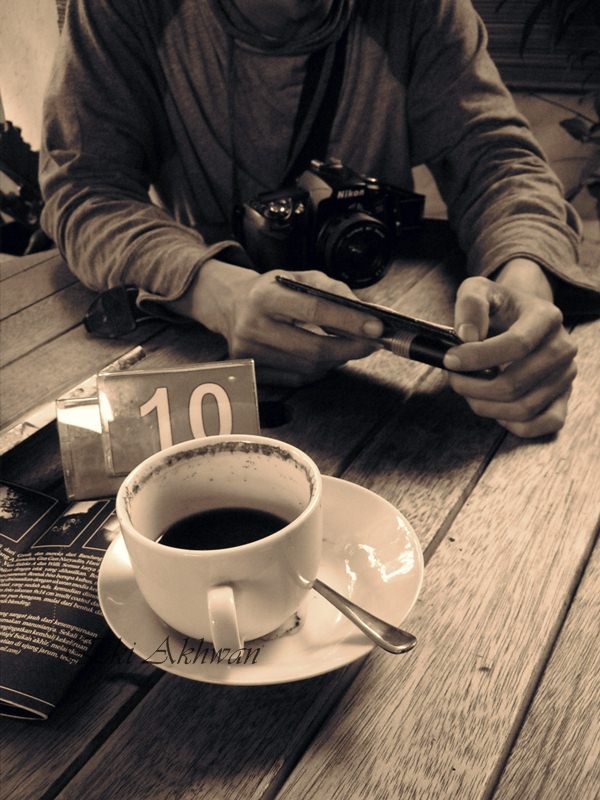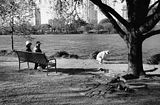A slide show of my eclectic photo works collected at Suka Suka.
Wednesday, December 5, 2012
Monday, July 11, 2011
Finding Your Own Voice in Your Photographic Practice
NOTE: The following article is a reflective answer to a question I've been asking about my photographic practice. I wrote it as an introduction to Suka Suka, an eclectic photo blog of mine which I recently lauched (see the side bar link). The question is:
What kind of photographs will you be making if you had no audience in mind?
_____
There aren't many things that I can say as convincingly as this: "Photography is my passion."
I have been taking pictures since I had my first camera, when I was twelve years old. The fascination with the visual world and the passion to explore it felt so strongly then. It still does today. I'm still taking pictures as 'ferociously' as - if not more than - I was back then.
After all these years, my understanding of the visual world has of course evolved. The curiosity-driven and carefree approach of the beginning years of my love affair with photography have since then been interspersed with serious efforts in understanding it. I began to let the technical nooks and crannies of photography take hold of me. They even at one time had taken the best part of my relationship with photography. My knowledge and skills improved significantly. But I was also beginning to get estranged from the carefree exploratory spirit I once had. My approach to photography became stifled with technical concerns.
I became restless and questioning. I could make technically fine photographs, but I was not happy. They looked good but didn't feel as good. I gave birth to them, with my eyes and hands, but they looked like orphans. I missed the technically imperfect pictures that I made with joy and felt right.
Then I began to explore some more. Taking pictures that I like, some. Taking assignments from others, some. Doing ideal projects so that I could find meanings in my photographic practice, some.
Over the course of doing these things, I began to realize that it was in making the instinctual pictures - pictures that I mentally, emotionally, and spiritually had connection with - that I found joy with. And it was pictures that I made in this way that felt right. They spoke 'me'. There's me in them.
I was ecstatic in this realization. I had eventually rediscovered 'the voice', my photographic voice, that I had forgotten and silenced in the name of technical perfection!
The right pictures that I make are varied in subject matters, diverse in their technical considerations, and may or may not be of interest to others. In these concerns, they are eclectic. But they do have one thing in common: they were made instinctually, often at the spur of the moment in response to a visual stimuli. It is this kind of pictures that I share with you here.
SUKA SUKA is an Indonesian word that means more or less 'the way one likes it'. It is the name I have chosen for this photo blog of mine.
Wednesday, February 16, 2011
X-Pro
What can be happening when photographers meet?
X-pro!
I honestly think that's what's going to happen when photographers meet.
Some of you may of course know what X-pro is. It's the short form of cross processing, i.e. the procedure by which - back in the age of film photography - a piece of film is deliberately processed in a chemical solution which is not intended to be used for that particular type of film. The result is, well, interesting! There are these suprisingly 'unrealistic colors', high contrast, and so on and so forth as you can see in this series of photographs I took at a photographers' gathering I attended yesterday.
X-pro can now of course be simulated in digital processing (what's not these days?). Nearly all digital photography processing softwares I know of have this facility/capability. In Photoshop, you can manipulate the contrast and brightness, hue and saturation, and the curve editor to get this effect. In other programs like the PhotoScape, this facility is available in the form of a filter that can be applied with a click of a button.
Technical questions aside, what X-processing do you see in the subject of these photographs?
Sunday, December 26, 2010
Photographs from A Rainy Day on The Beach
Unlike with any other places, the beach is a place where one - a photographer especially - would expect to find the sun and a clear blue sky. Unfortunately, the beach is just part of the earth, and like any other places on it and under the sky, it can also be cloudy and rainy, or even stormy.
So, what would you do if you had come to the beach, all gears packed and ready for the sun, sand, and surf, but found that the place was wet and cloudy?
Here's what I would do:
A photograph taken on the beach during a rainy day (or any day where the sky is overcast for that matter) would produce a near monochromatic image. The soft and even light would even make the picture flat and uninteresting. If this situation discourages you, you might just pack up and go or wait till the weather gets better.
But wait!
The complement of (or cure for?) monochrome is colors. That's it! Colors would break the monotony and the flatness of the situation.
And here's what I did on my recent excursion to a beach with some colleagues when I found that it was rainy and cloudy. I kept walking with my umbrella and camera, snapping whatever I could find interesting photographically all the while scouting for the badly needed colors to make my photographs work.
Then out of nowhere (I was lucky enough here), these girls in bright color clothings carrying bright-colored umbrellas were coming into my view finder. Two were chasing each other playfully. Others were just standing at the edge of the water contemplatively looking at the dark horizon.
"Perfect!" I said. And before I knew it, I had been snapping like crazy trying to follow their moves all the while trying to pay attention to the lines, the perspective, and proportion.
Note: I took all the photographs here with my Canon PowerShot A490 point and shoot digital pocket camera. I only made minor adjustments with a photo editing software for level, contrast, vignetting effects, and resizing.
Friday, July 16, 2010
Medina
It's been a while since I last posted in this blog. My apology.
I continue taking and making pictures, of course. After all, that's about one of the things that keeps me ticking. Some of those pictures are good, some bad, some taken seriously, some only lightly at the gut's urge of the moment. Some I proudly share with you here and here. But there are countless others that I keep for myself, sitting in the dark corners of my harddisks.
Today I decided to share some photographs that I have - for the past three months or so - kept for myself. I took them in Medina on our Umrah pilgrimage.
Instead of taking the usual pictures of the beautiful Islamic architectures or documenting what were doing or the places we visited, I decided to observe and make pictures of the ordinary, the stuff that many call the street photography.
Here is the first installment from the city of Medina, the first city we visited on our umrah after Jeddah, the port of entry. 




Thursday, February 4, 2010
Speaking Photograph

We all know that saying (or cliche?) that a photograph speaks a thousand words. Does it really speak though? Can a photograph speak on its own? If it does, how?
More on this in the next posts.
By the way, I originally posted this photo - and three others I previously posted - on my other blog Bandung Streets [Photography].
_________________________
Karena sudah terlalu sering kita dengar, pernyataan ini menjadi klisye: "A photograph speaks a thousand words." Betulkah foto bisa berbicara sendiri? Bagaimana caranya?
Kita akan cara jawaban atas pertanyaan ini pada posting selanjutnya.
Foto ini - dan tiga foto lain sebelum ini - semula saya publikasikan di blog fotografi saya Bandung Streets [Photography].
Thursday, January 28, 2010
The Photograph as Document

To document is to record. Documentary photography, therefore, can be defined as the practice of photography that is based on the idea that the photograph is a record.
As a record, the photograph gets its authority from, among others, what is called the pro-photographic event (the event was there; it happened) effect and I was there (the photographer) effect. Furthermore, it also gets its authority from the sense of authenticiy it derives from what is called the indexical effect of conjectures of cirumstance. A photograph, in other words, is a "meeting place" or rendesvous of things such as the subject matter, framing, light, characteristics of the lens, the chemical and/or digital processing, etc.
Unless otherwise stated, the articles and photos in this blog are the copyright property of Eki Qushay Akhwan. All rights reserved. You may NOT republish any of them in any forms without prior permission in writing from Eki Qushay Akhwan.
Kecuali disebutkan secara khusus, hak cipta atas tulisan dan karya foto di dalam blog ini ada pada Eki Qushay Akhwan. Dilarang mempublikasi ulang artikel dan/atau karya foto di dalam blog ini dalam bentuk apapun tanpa izin tertulis dari Eki Qushay Akhwan.


















.jpg)








